Has tourism changed since 1950? Absolutely. From the golden age of glamorous air travel to today’s budget-friendly adventures, tourism has undergone a massive transformation. SIXT.VN offers seamless travel experiences in Vietnam, connecting you with the rich culture and breathtaking landscapes. Discover the evolution of tourism and how SIXT.VN can make your Vietnamese journey unforgettable.
1. How Has Air Travel Evolved Since 1950?
Air travel has transformed drastically since 1950. Back then, it was a luxurious experience, even in economy class. Now, while economy might be less glamorous, with airlines like Ryanair and easyJet charging for extras, business and first-class travel have reached new heights of luxury.
In the 1950s, economy passengers enjoyed more legroom and silver service meals, according to “A History of Air Travel” by aviation historian John Smith. Today, budget airlines offer affordable options but fewer amenities. In contrast, premium cabins boast flat beds, exclusive bars, and even showers on airlines like Emirates. SIXT.VN can help you book flights, ensuring a comfortable journey tailored to your preferences and budget.
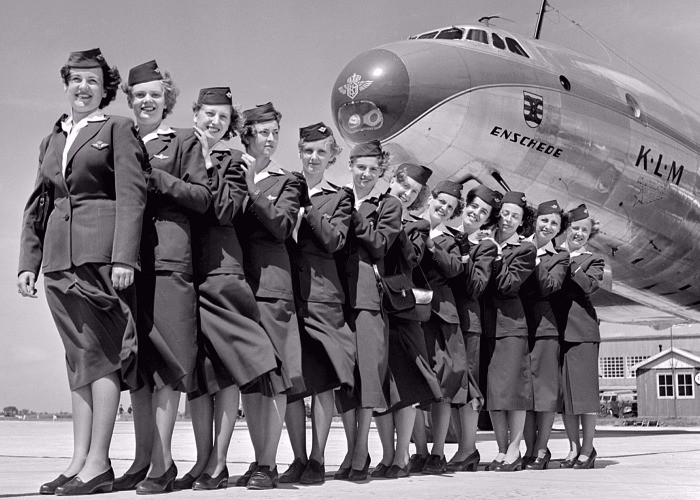 KLM in-flight dining during the golden age of travel
KLM in-flight dining during the golden age of travel
1.1. What Was Air Travel Like in the 1950s?
Air travel in the 1950s was synonymous with luxury. Airlines such as Pan Am offered lavish in-flight services, including multi-course meals served on fine china. Cabins were spacious, and passengers dressed in their best attire. “Flying was seen as a special occasion,” notes travel expert Emily Carter in her book “The Evolution of Travel.”
1.2. How Have Budget Airlines Changed Air Travel?
Budget airlines revolutionized air travel by making it accessible to a wider audience. Companies such as Ryanair and easyJet offer significantly lower fares but charge extra for services that were once standard, such as meals and checked baggage. This shift has democratized travel, allowing more people to explore the world.
1.3. What Luxury Amenities Are Available in Modern First-Class Travel?
Modern first-class travel offers unparalleled luxury. Passengers can enjoy private suites, lie-flat beds, gourmet dining, and exclusive lounges. Some airlines, like Emirates, even feature in-flight showers. These amenities cater to travelers seeking the utmost comfort and convenience.
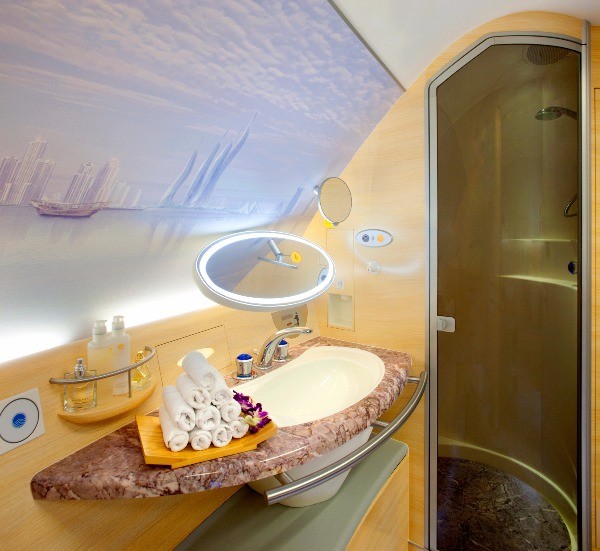 First class shower onboard an Emirates flight
First class shower onboard an Emirates flight
2. How Did Airport Security Change From Relaxed to Strict?
Airport security has become considerably stricter. 60 years ago, security was lax, with passengers and visitors freely accessing gates without ID or thorough checks. However, after numerous high-profile hijackings, security measures tightened.
Today, travelers often arrive three hours early for international flights, face restrictions on liquids, and undergo full-body scans. According to the Transportation Security Administration (TSA), these measures are essential for ensuring passenger safety. SIXT.VN keeps you updated on the latest airport security protocols, making your travel smoother.
2.1. What Security Measures Were Absent in the 1950s?
In the 1950s, security measures were minimal. Passengers rarely needed to show identification, and there were no X-ray scanners. Friends and family could wave goodbye at the gate without needing a boarding pass. This relaxed approach contrasts sharply with today’s stringent protocols.
2.2. What Events Led to Increased Airport Security?
A series of hijackings in the late 1960s and early 1970s prompted significant changes in airport security. These incidents highlighted the vulnerability of air travel and led to the introduction of stricter screening procedures. The 9/11 terrorist attacks further intensified security measures, resulting in the protocols we know today.
2.3. What Security Measures Are Commonly Used Today?
Today’s airport security measures include mandatory ID checks, X-ray scanners for baggage, and full-body scanners for passengers. Restrictions on liquids and gels are also in place, and security personnel conduct thorough searches. These measures aim to prevent potential threats and ensure the safety of all travelers.
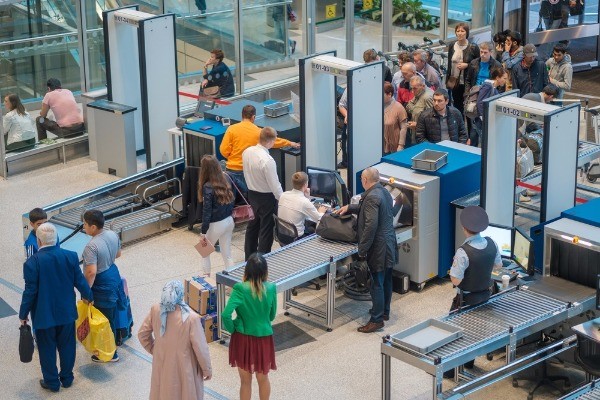 Modern airport security
Modern airport security
3. How Has the Perception of Smoking on Planes Changed?
Smoking on planes was once commonplace. Now, it’s strictly prohibited, with hefty fines and potential prison sentences for violators in the UK.
The shift reflects growing awareness of the health risks associated with smoking and the importance of clean air in enclosed spaces. SIXT.VN ensures you are aware of these regulations, providing a smoke-free travel environment.
3.1. Why Was Smoking Allowed on Planes in the Past?
In the past, smoking was widely accepted in many public spaces, including airplanes. There was less awareness of the health risks associated with secondhand smoke, and smoking was often seen as a normal part of daily life. Airlines catered to smokers by providing ashtrays and allowing smoking in designated sections of the cabin.
3.2. When Did Smoking Bans Become Commonplace?
Smoking bans on airplanes became more common in the late 1980s and early 1990s. Growing awareness of the health risks of secondhand smoke, coupled with advocacy from public health organizations, led to increasing pressure on airlines to prohibit smoking. By the late 1990s, most major airlines had implemented complete smoking bans on all flights.
3.3. What Are the Penalties for Smoking on a Plane Today?
Today, smoking on a plane can result in significant penalties. In the UK, offenders may face fines of up to £2,500 and potential prison sentences of up to five years. Airlines also have the right to ban passengers from future flights. These strict penalties reflect the seriousness with which smoking violations are treated.
4. How Has Air Travel Safety Improved Over Time?
Air travel is much safer now. Fatal accidents have decreased significantly, from 40 per million flights in the USA in 1959 to around 0.1 per million today. According to the Civil Aviation Authority, you’re more likely to be killed in a road accident or struck by lightning than die in a plane crash.
Qantas has been named the world’s safest airline for several consecutive years, highlighting the industry’s commitment to safety. SIXT.VN prioritizes your safety by partnering with reputable airlines and providing real-time travel updates.
4.1. What Factors Contributed to Increased Air Travel Safety?
Several factors have contributed to the increased safety of air travel. Advances in aircraft technology, improved pilot training, and enhanced air traffic control systems have all played a role. Stricter safety regulations and rigorous maintenance procedures have also helped to reduce the risk of accidents.
4.2. What Role Does Technology Play in Modern Aviation Safety?
Technology plays a crucial role in modern aviation safety. Advanced navigation systems, weather monitoring technology, and automated flight controls help pilots to fly more safely and efficiently. Black boxes record flight data and cockpit conversations, providing valuable information in the event of an accident.
4.3. Which Airlines Are Recognized for Their Safety Records?
Several airlines are recognized for their exceptional safety records. Qantas has been named the world’s safest airline for multiple years, while other airlines such as Air New Zealand, Emirates, and Cathay Pacific also have strong reputations for safety. These airlines prioritize safety in all aspects of their operations.
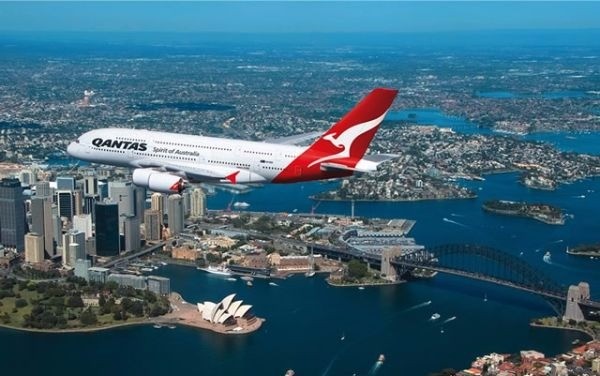 Qantas airplane
Qantas airplane
5. How Have Travel Destinations Changed Since 1950?
Travel destinations have become more diverse. In 1950, only 2% of Brits traveled abroad, compared to approximately 56% in 2016, according to ABTA.
Today, people are more willing to visit new countries, driven by increased globalization and affordable travel options. SIXT.VN offers tours to both popular and off-the-beaten-path destinations in Vietnam, catering to your adventurous spirit.
5.1. What Destinations Were Popular in the 1950s?
In the 1950s, popular travel destinations included traditional European hotspots such as France, Italy, and Spain. Coastal resorts and historical cities were particularly favored by tourists. Long-distance travel was less common due to higher costs and limited accessibility.
5.2. What Factors Have Led to the Popularity of New Destinations?
Several factors have contributed to the popularity of new travel destinations. Increased affordability of air travel, the rise of budget airlines, and the growing accessibility of information through the internet have all played a role. Social media and travel blogs have also inspired people to explore new and exotic locations.
5.3. What Are Some Emerging Travel Destinations Today?
Emerging travel destinations today include countries in Southeast Asia, South America, and Africa. Vietnam, Cambodia, and Myanmar are gaining popularity among travelers seeking unique cultural experiences. Destinations such as Iceland, Croatia, and the Galapagos Islands are also attracting more visitors.
6. How Has the Cost of Travel Changed Over the Years?
Travel is more affordable. In 1957, a one-week Thomas Cook holiday in Lloret de Mar cost around £50, equivalent to over £1,100 today. In 2017, similar all-inclusive breaks cost less than £500 a week.
Cheaper flights and accommodation have made travel accessible to more people. SIXT.VN helps you find the best deals on hotels and tours in Vietnam, maximizing your travel budget.
6.1. What Made Travel Expensive in the Past?
In the past, travel was expensive due to several factors. Air travel was primarily for the wealthy, with high ticket prices and limited availability. Accommodation options were also more limited and expensive. Additionally, travel infrastructure was less developed, adding to the overall cost.
6.2. How Have Budget Airlines Made Travel More Affordable?
Budget airlines have revolutionized travel by offering significantly lower fares. By cutting costs on non-essential services and operating more efficiently, these airlines have made air travel accessible to a wider audience. This has led to increased competition and lower prices across the industry.
6.3. What Strategies Can Travelers Use to Find Affordable Travel Options?
Travelers can use several strategies to find affordable travel options. Booking flights and accommodation in advance, traveling during the off-season, and using price comparison websites can help to reduce costs. Additionally, opting for budget-friendly accommodation options and eating at local restaurants can save money.
 Thomas Cook tour group
Thomas Cook tour group
7. How Have Destinations Like Dubai Transformed Over Time?
Destinations have undergone significant transformations. Dubai, a small fishing port in the 1950s with a population of 20,000, has become a high-rise city with the world’s tallest building, the Burj Khalifa.
The discovery of oil in the 1960s and the UAE government’s investment in tourism have driven this change. SIXT.VN can arrange tours to explore Dubai’s modern marvels and cultural heritage.
7.1. What Was Dubai Like in the 1950s?
In the 1950s, Dubai was a small fishing port with a modest population. The city lacked modern infrastructure and relied primarily on fishing and trade. Life was simple, and the pace was slow. The discovery of oil in the following decade would transform Dubai into the bustling metropolis it is today.
7.2. What Role Did Oil Play in Dubai’s Transformation?
Oil played a crucial role in Dubai’s transformation. The discovery of oil in the 1960s brought significant wealth to the region, which the UAE government used to invest in infrastructure and tourism. This investment laid the foundation for Dubai’s development into a global hub for business and tourism.
7.3. What Are Some of Dubai’s Modern Attractions?
Dubai boasts a wide range of modern attractions, including the Burj Khalifa, the world’s tallest building. Other popular attractions include the Dubai Mall, the Palm Jumeirah, and the Dubai Fountain. The city also offers a vibrant nightlife, world-class dining, and luxury shopping experiences.
 Dubai skyline
Dubai skyline
8. How Has the Cleanliness of Beaches Improved Over Time?
Beach cleanliness has improved. In the UK, the sea around Gosport was so polluted in 1957 that a young girl contracted polio after swimming there. Today, over 85% of bathing spots in Europe meet the European Environment Agency’s “excellent” standard, with many Blue Flag beaches.
Better environmental regulations and waste management have contributed to this improvement. SIXT.VN promotes eco-friendly tourism, ensuring you can enjoy Vietnam’s beautiful beaches responsibly.
8.1. What Were the Causes of Beach Pollution in the Past?
Beach pollution in the past was caused by several factors, including untreated sewage, industrial waste, and agricultural runoff. Lack of environmental regulations and inadequate waste management systems contributed to the problem. This pollution posed a significant threat to public health and marine ecosystems.
8.2. What Measures Have Been Taken to Improve Beach Cleanliness?
Several measures have been taken to improve beach cleanliness. Stricter environmental regulations have been implemented to reduce pollution from sewage and industrial waste. Waste management systems have been improved to prevent litter from reaching the beaches. Additionally, public awareness campaigns have encouraged responsible behavior and participation in beach cleanups.
8.3. What Is the Significance of Blue Flag Beaches?
Blue Flag beaches are recognized for their high environmental and quality standards. To achieve Blue Flag status, beaches must meet strict criteria related to water quality, environmental management, safety, and accessibility. The Blue Flag program promotes sustainable tourism and encourages responsible beach management practices.
 Mallorca's Blue Flag Cala Mondrago beach
Mallorca's Blue Flag Cala Mondrago beach
9. How Has Train Travel Evolved Since 1950?
Train travel has evolved significantly. Japan’s Shinkansen (bullet train), which debuted in 1964, revolutionized high-speed rail. Today, Shanghai’s Maglev travels at speeds of up to 267mph, surpassing the bullet train’s 200mph.
High-speed trains offer a convenient and eco-friendly alternative to air travel. SIXT.VN can help you book train tickets for scenic routes across Vietnam, enhancing your travel experience.
9.1. What Was Train Travel Like in the Mid-20th Century?
In the mid-20th century, train travel was a popular mode of transportation, particularly for long-distance journeys. Trains offered a comfortable and scenic way to travel, with amenities such as dining cars and sleeper compartments. However, train travel was often slower and less efficient compared to modern high-speed rail.
9.2. How Did the Introduction of High-Speed Trains Transform Rail Travel?
The introduction of high-speed trains transformed rail travel by offering faster and more efficient transportation. High-speed trains can travel at speeds of over 200 mph, significantly reducing travel times between cities. This has made train travel a more competitive alternative to air travel, particularly for shorter distances.
9.3. What Are Some of the Fastest Trains in the World Today?
Some of the fastest trains in the world today include the Shanghai Maglev, which travels at speeds of up to 267 mph, and the Shinkansen bullet train in Japan, which reaches speeds of up to 200 mph. Other high-speed trains can be found in Europe, including the TGV in France and the ICE in Germany.
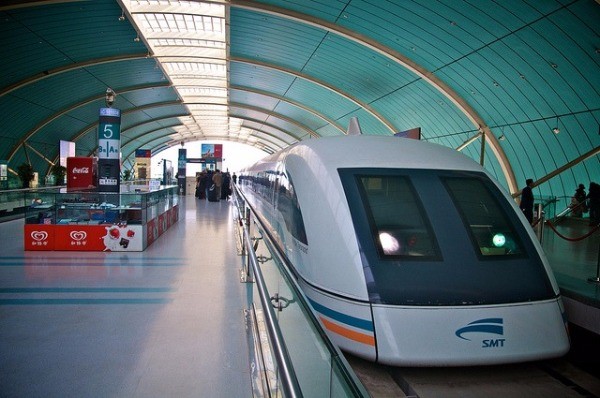 Shanghai Maglev train
Shanghai Maglev train
10. How Has the Popularity of Overnight Trains Changed?
Overnight trains are less common in Europe. While still prevalent in countries such as India and China, their popularity has decreased in Europe. The launch of the high-speed TGV train from Paris to Barcelona led to the axing of the sleeper service on the same route.
Despite this, overnight trains offer a unique travel experience. SIXT.VN can provide information on available overnight train routes in Asia, helping you plan a memorable journey.
10.1. Why Were Overnight Trains Popular in the Past?
Overnight trains were popular in the past because they offered a convenient and comfortable way to travel long distances. Passengers could sleep during the journey and arrive at their destination refreshed and ready to go. Overnight trains also provided a cost-effective alternative to flying, particularly for budget-conscious travelers.
10.2. What Factors Have Led to the Decline of Overnight Trains in Europe?
Several factors have led to the decline of overnight trains in Europe. The rise of budget airlines has made flying more affordable and accessible, reducing the demand for overnight train travel. Additionally, the introduction of high-speed trains has shortened travel times, making overnight journeys less necessary.
10.3. Where Can Travelers Still Find Popular Overnight Train Routes?
Travelers can still find popular overnight train routes in countries such as India and China. These countries have extensive rail networks and offer a wide range of overnight train services. Overnight trains remain a popular mode of transportation in these regions, particularly for long-distance journeys.
11. What Are the Key Trends Shaping the Future of Tourism?
The future of tourism is being shaped by several key trends. These include sustainable travel, personalized experiences, and the use of technology to enhance the travel experience. According to a report by the World Tourism Organization (UNWTO), sustainable tourism is growing rapidly, with more travelers seeking eco-friendly and responsible travel options.
11.1. How Is Technology Changing the Way We Travel?
Technology is transforming the way we travel in numerous ways. Online booking platforms make it easier to find and book flights, accommodation, and tours. Mobile apps provide access to travel information, maps, and language translation tools. Virtual reality and augmented reality technologies offer immersive travel experiences.
11.2. What Is Sustainable Tourism and Why Is It Important?
Sustainable tourism is tourism that takes full account of its current and future economic, social, and environmental impacts, addressing the needs of visitors, the industry, the environment, and host communities. It is important because it helps to protect natural resources, preserve cultural heritage, and promote economic development in a responsible manner.
11.3. How Can Travelers Make More Sustainable Choices?
Travelers can make more sustainable choices by opting for eco-friendly accommodation, using public transportation, supporting local businesses, and respecting local cultures and customs. They can also choose to travel during the off-season to reduce overcrowding and minimize their environmental impact.
12. How Can SIXT.VN Enhance Your Travel Experience in Vietnam?
SIXT.VN can significantly enhance your travel experience in Vietnam by providing a range of convenient and reliable services. From airport transfers to hotel bookings and guided tours, SIXT.VN offers everything you need to plan a seamless and unforgettable trip. We offer personalized itinerary planning and ensure high-quality service.
12.1. What Services Does SIXT.VN Offer to Travelers in Vietnam?
SIXT.VN offers a comprehensive range of services to travelers in Vietnam, including:
- Airport Transfers: Enjoy hassle-free transportation from the airport to your hotel.
- Hotel Bookings: Choose from a wide selection of hotels to suit your budget and preferences.
- Guided Tours: Explore Vietnam’s top attractions with knowledgeable local guides.
- Custom Itineraries: Let us create a personalized itinerary tailored to your interests.
- Car Rentals: Discover the freedom to explore Vietnam at your own pace with our car rental service.
12.2. How Can SIXT.VN Help With Airport Transfers in Hanoi?
SIXT.VN provides reliable and comfortable airport transfer services in Hanoi. Our professional drivers will meet you at the airport and transport you to your hotel in a safe and timely manner. With SIXT.VN, you can avoid the stress of navigating public transportation or haggling with taxi drivers.
12.3. What Are the Benefits of Booking a Tour With SIXT.VN?
Booking a tour with SIXT.VN offers numerous benefits. Our tours are led by experienced local guides who provide valuable insights into Vietnam’s history, culture, and cuisine. We offer a variety of tour options to suit different interests and budgets, ensuring a memorable and enriching travel experience.
Address: 260 Cau Giay, Hanoi, Vietnam.
Hotline/Whatsapp: +84 986 244 358.
Website: SIXT.VN.
FAQ About How Tourism Has Changed Since 1950
1. How has the role of technology impacted tourism since 1950?
Technology has revolutionized tourism by enabling online booking, providing access to travel information, and offering virtual travel experiences, enhancing convenience and accessibility.
2. How has the rise of budget airlines affected the demographics of travelers since 1950?
Budget airlines have democratized travel, making it accessible to a broader range of income levels and enabling more people to explore the world.
3. How have environmental concerns reshaped tourism practices since 1950?
Environmental concerns have led to a growing demand for sustainable tourism practices, with travelers seeking eco-friendly options and responsible travel behaviors.
4. How has globalization influenced the diversity of travel destinations since 1950?
Globalization has expanded the range of travel destinations, introducing travelers to previously lesser-known regions and cultures, thereby promoting cultural exchange.
5. How have security measures at airports changed the travel experience since 1950?
Increased security measures at airports have made travel safer but more time-consuming and regulated, affecting the overall travel experience.
6. How has the improvement in transportation infrastructure affected travel patterns since 1950?
Improved transportation infrastructure, including high-speed trains and better roads, has made travel faster and more efficient, enabling travelers to visit more destinations in less time.
7. How has the shift in accommodation options (e.g., Airbnb) transformed tourism since 1950?
The shift towards diverse accommodation options like Airbnb has provided travelers with more personalized and cost-effective choices, changing how people experience travel.
8. How have changing attitudes towards smoking affected air travel since 1950?
Changing attitudes toward smoking have led to complete bans on smoking in flights, improving air quality and overall health during travel.
9. How has the increase in disposable income affected international travel since 1950?
The increase in disposable income has made international travel more accessible, allowing more people to afford trips and explore different parts of the world.
10. How have geopolitical events shaped the landscape of tourism since 1950?
Geopolitical events, such as conflicts and political instability, have significantly influenced the safety and popularity of certain destinations, reshaping the tourism landscape.



